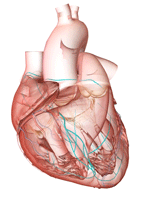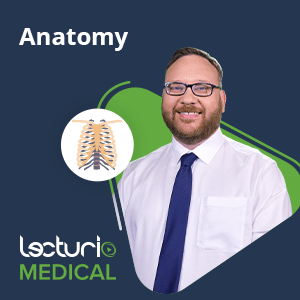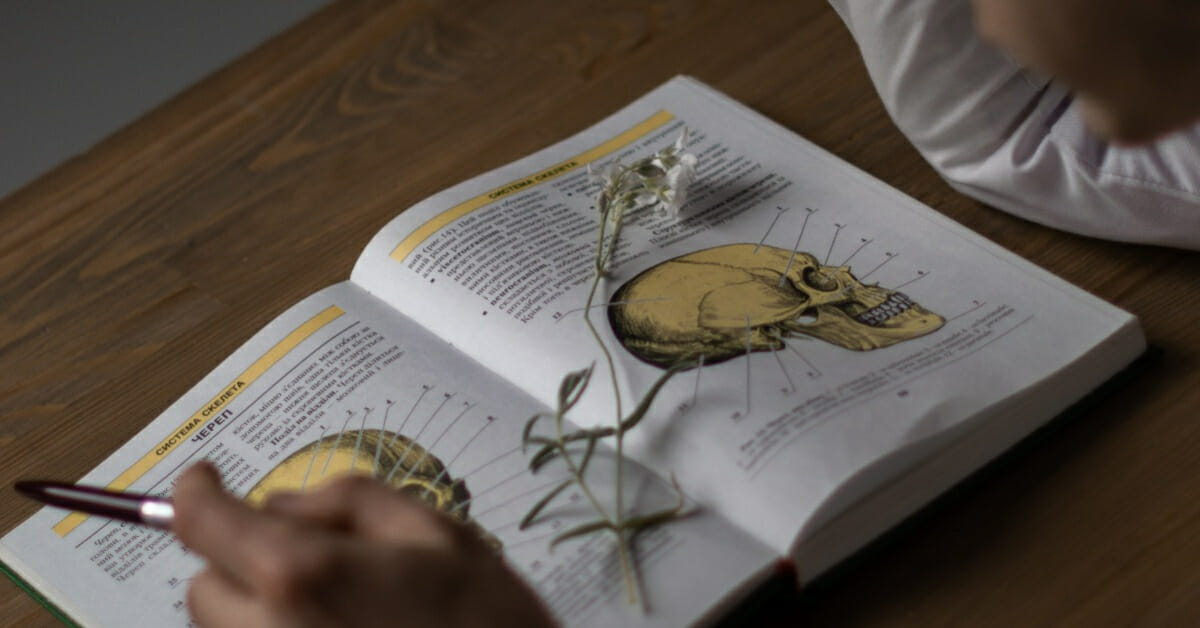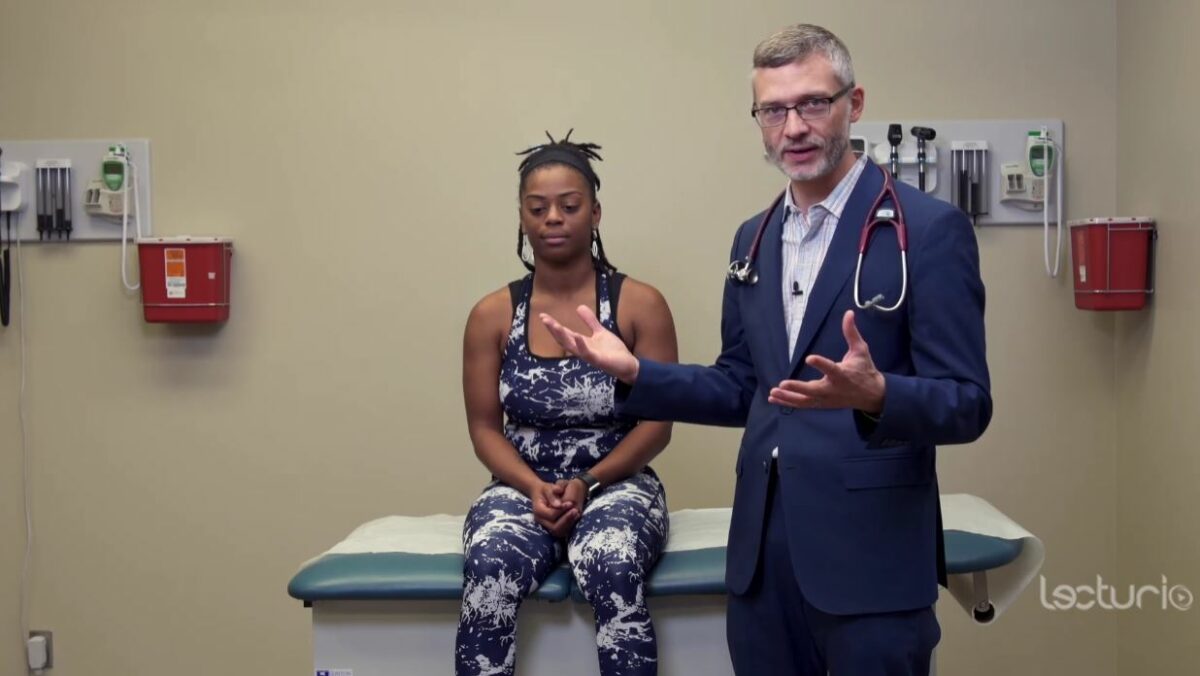You’ve probably taken basic anatomy in your undergraduate days, but you’ll soon realize that medical school is a completely different ball game.
For those who don’t know yet: Human anatomy is the study of the structures in the human body.
So, it’s pretty obvious that to survive med school you need to get the hang of the literal ins and outs of anatomy. In fact, this subject is so important that most schools want you to learn from an actual human body.
For many medical students, especially those who aren’t particularly visual learners, figuring out the best way to learn anatomy is hard. It’s more than just memorizing the location of every body part. You have to know your body from a three-dimensional perspective, including where all the muscles are attached, which vessels and nerves go where, and a whole bunch of other concepts that can be pretty intimidating.
Instead of dwelling on the question of “how to pass anatomy,” here are a few study tips to help you navigate the intricate maze and mystery that is the human body. In my opinion, the following anatomy study guide shows the best way to study anatomy for beginners.
#1: Start with the Basics. Learn in Chunks.
There are a lot of concepts in anatomy and it can look overwhelming. In medical school where everything is complex, you’ll find that it’s best to keep things simple. Start with brushing up on your general anatomy. What are the parts of your face? Where are your internal organs located?
You don’t have to know every muscle in the body or every vessel that feeds into a particular organ right away. Instead, start with the major vessels then work your way down to their branches.
Start with muscle groups, then slowly read up on the individual muscles and their functions. Once you have the basics down pat, you’ve already built a strong foundation for the rest of the subject. It helps to be systematic.
Related videos
#2: Pick a Good Atlas and/or Anatomy Book.
Grey’s Anatomy is more than just an award-winning show– it’s also one of the best-known anatomy books out there. But there’s a whole world of anatomy books you can also choose from. While your school has probably recommended a book to use for anatomy, I would suggest finding a book that fits your learning style.
Personally, I prefer Netter’s Atlas of Human Anatomy compared to Grey’s Anatomy, but I’m sure some people would disagree. What matters is that you’re learning from a good book that works for you. Some people even use 3D atlas applications on their devices, which work just as well. You can even study using both books and apps. So how do you know what to work with?

A great study resource is one that’s tailored to how you learn. Do you learn better looking at drawings of the human body, a 3D diagram, or photos from a cadaver of a real human? Do you prefer to see more clinical correlations or radiographic images? Will seeing how all the organs are layered help you? Will all these things confuse you more? These are the styles you need to consider when picking out a book because each book has something unique to offer.
#3: Make the Most Out of the Cadaver Lab.
While scary at first, cadaver lab is your practical segment of anatomy class. I’ll give you a few tips for starters:
Your cadaver is your first patient and your best atlas. There’s no better way to learn than seeing it for yourself. Separating the blood vessels and nerves yourself, identifying the various organs, and following the pathways of each organ system is something that takes more effort to do on a cadaver. Finding the parts and feeling them out for yourself stimulates your other senses in a way that you won’t get from reading an atlas or a 3D application.
Why is that important? Because studies show that using more than one sense helps us learn things better.
#4: Remember: “Form Follows Function.”
When it comes to anatomy and physiology, this is the motto you must always keep at the back of your mind. What does it mean? The human body is an intricate system of various mechanisms that work together to keep everything in balance. That is to say, every organ has a purpose, even when you think it doesn’t, and their location serves that purpose.
Thankfully, most medical schools teach you anatomy and physiology at the same time, so that you build associations between each concept, which makes them easier to imagine in action. For example, the flexor muscles of the forearm — obviously– flex your arm. So it makes sense that they would be found on the ventral side of the arm, where flexion happens.
#5: Etymology: Learn the Origins and Roots of the Terms.
Some words in anatomy can be easy to forget. Medical terms are rarely used in our daily lives, so it makes sense that outside of the field of medicine, we’d forget them easily. What helped me was knowing the origin of some of the words.
For example, many muscles of the body are named in a way that makes them easy to find and describe. When memorizing the muscles on your forearm, you’ll hear a lot of terms such as brevis which is Latin for “short” (like the word “brief”), longus which is Latin for “long”, pollicis which is Latin for “of the thumb”. Therefore, it follows that your abductor pollicis brevis and flexor pollicis brevis are “short” muscles of the “thumb” and your extensor pollicis longus and abductor pollicis longus are “long” muscles of the “thumb.”
So from those names alone, you already have the function, the attachment, and a description of the muscle that you’re studying. I know that learning another language is another subject on its own, but it really helped me to learn some linguistic terms when memorizing all those muscles.
#6: Draw It.
I’ll admit that I’m not the best at drawing. But it’s something I recommend trying, because it actually helps with memorization. How? It helps you visualize and reinforce your memory of the body part or pathway you’re studying. It doesn’t have to be a good or perfectly accurate drawing– it just has to be accurate enough so you know where each part is supposed to be.
I’ve used this technique to teach other classmates in anatomy class and even with patients who want a more in-depth explanation about their disease. Drawing is a good habit to have, even for non-artistic types. There’s even an anatomy coloring book you can use if you think that’ll help you remember anatomy concepts better.
#7: Cover Up the Labels, Identify, and Repeat.
So what’s the best way to memorize anatomy? Since bodies don’t actually come with labels, this study technique has been the most effective for me. As a visual learner, I found it easier to cover the labels on my anatomy book and try to recall which body part was pointing to which. There are many applications and even some books with supplementary flashcards that can help you do this.
Repetition is probably the most effective study habit to memorize anything in medical school because it’s all about retrieval.
The more you practice those connections, the easier it becomes to retrieve information when you need it, especially in the long term. So always remember that practice makes perfect. You may not memorize everything you need today, but making associations and connections between concepts for better information retrieval is a great first step.
Take the Course: Anatomy
Find the best way to learn anatomy with Craig Canby, PhD and James Pickering, PhD. The complete online course will prepare you for your exams and make anatomy easy!
Example Anatomy Practice Question
A professional musician visits his physician after a morning concert. He complains of painless swelling in his right cheek when he plays his tuba. Physical examination of the patient reveals slight facial asymmetry due to minor swelling on the right side of the face. The skin over the swelling is smooth without any secondary changes. Palpation reveals a soft and non-tender swelling. The oral opening is normal without any trismus. Further examination reveals swelling of the left buccal mucosa extending from the first to the third molar. Bedside ultrasound shows small areas of high echogenicity consistent with pneumoparotid. Which nerve is associated with motor function to prevent air from entering the affected duct in this patient?
A. V2 – Maxillary nerve
B. V3 – Mandibular nerve
C. CN VII – Zygomatic branch
D. CN VII – Buccal branch
E. CN VII – Marginal mandibular branch





